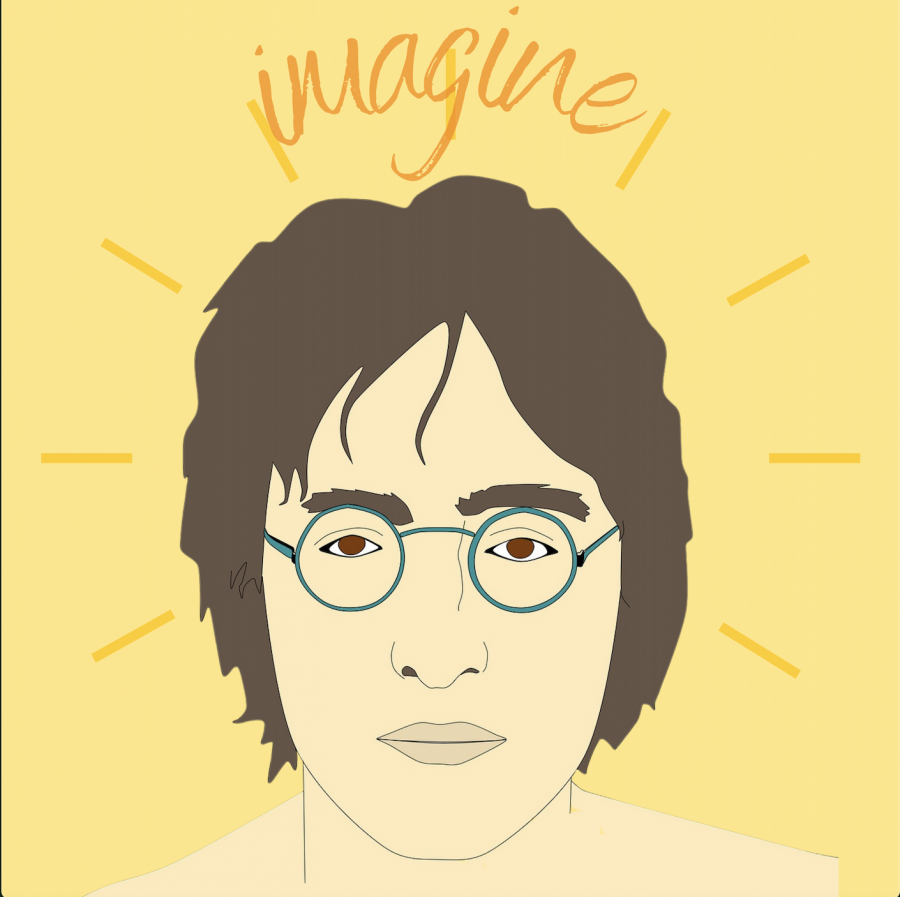It’s been 50 years since the release of John Lennon’s most famous album and it appears to gain more deeply tangible meaning through the ages.
“Imagine” was released on Sept. 9, 1971 and even today, it is unquestionably a fan favorite, a global classic body of work. It’s durably clever in the way each of the ten tracks serves a different purpose while solidly connecting to Lennon’s imagery of attaining mental peace and having thoughts beyond himself.
There’s no surprise at the album’s initial success after its release in 1971 and after Lennon’s assassination almost a decade later. Since his larger-than-life fame with the Beatles, “Imagine” defined the artist’s mainstream pop music comeback after occasional singles and the generational disdain for his wife, Yoko Ono.
Fans may say “Imagine” is a progressive and more-or-less minimalistic masterpiece as it offers an interesting message with sociocultural ideas and place of serenity Lennon aspires to grasp.
Half a century later, Lennon put into words what people will never be able to articulate as beautifully as the former Beatle does throughout the album.
He aggressively calls out hypocritical politicians in “Gimme Some Truth,” while “Crippled Inside” is a glistening and catchy reminder that anxiety and mental exhaustion must not be ignored.
These are themes still alive and present in contemporary culture, adding to the album’s evergreen essence.
Lennon dares to ask a number of questions on the album (“How?”), many of which are rhetorical and indirect that cause listeners to contemplate deeply along with him. He also provides a glimpse into his inner dialogue surrounding his manhood (“It’s So Hard,” “I Don’t Want To Be A Soldier,” “Jealous Guy”) and his position as a husband (“Oh My Love,” “Oh Yoko!”). This drives the theme of perplexity and the vast territory of the unknown— a real aspect of the human experience — all the way home.
Staying true to his notoriously sour personality, Lennon directly attacks fellow former Beatle Paul McCartney in “How Do You Sleep?” and stylistically corresponds to the Beatles with its musical influence and lyrical references (“The only thing you done was yesterday”).
After the mess that was the Beatles’ breakup in 1970, the Lennon-McCartney dream team, who composed an overwhelming majority of the band’s hits, experienced its own breakup and prompted a feud between both Lennon and McCartney. “How Do You Sleep?” is sly, shady and serves as one of pop music’s first diss tracks.
Though the aforementioned tracks contribute significantly to the album’s vintage magic, perhaps its title track (and conveniently, the very first track) is the most recognized and profound song on the album. In only 26 lines, it imagines a perfect world. Lennon transforms into a global ambassador and messiah of equality in “Imagine,” urging listeners to accompany him on a three-minute journey of visualizing a united utopia.
In the midst of the Vietnam War at the time of the album’s release and raging civil rights issues happening worldwide,“Imagine” seems to be in harmony with all global activists, fighting for equality long before and after his lifetime (“You may say I’m a dreamer / But I’m not the only one”). It is clear he knew people would come long after him and proclaim the same message.
Critics may argue the song itself is a performative effort from Lennon’s millionaire and superstar status to say something remotely moral after regularly making questionable remarks. If that is true, Lennon did a phenomenal job posing as a good and diligent citizen because listeners will be convinced to take his words to heart like he is a savior and imagine the same utopia.
Lennon accomplished many things before his untimely death. With the help of Ono, acclaimed producer Phil Sector and fellow former Beatle George Harrison, gracing the world with “Imagine” was just one of them.
The album illuminates the highs and lows of the human experience — from falling in love to feuding with a former business partner to being confused about the meaning of life to desiring a better world — making it a timeless gem even after 50 years.
Regardless of the direction music takes itself, “Imagine” could never go out of style.
Trinity Bland is a senior studying television, media, film and Spanish. Follow her on Twitter @trinityaliciaa.









